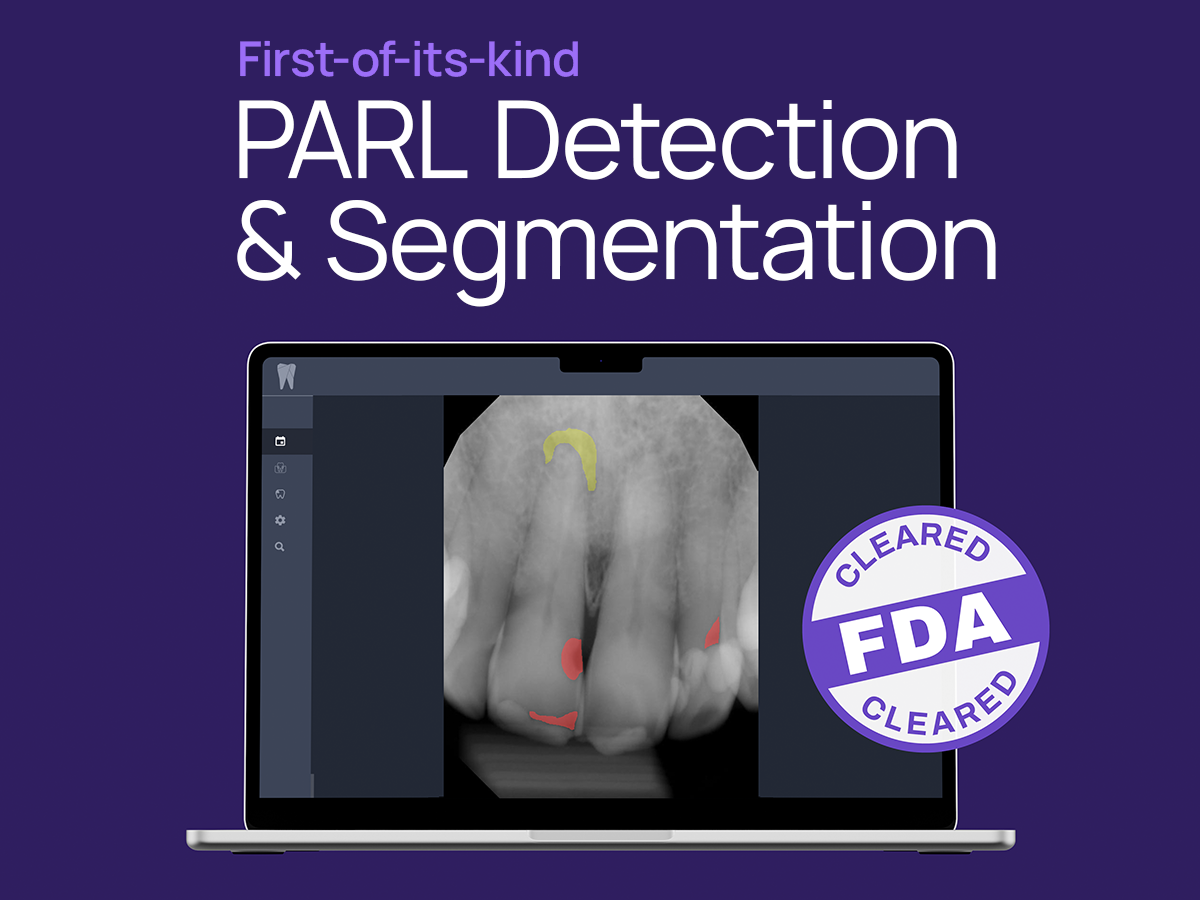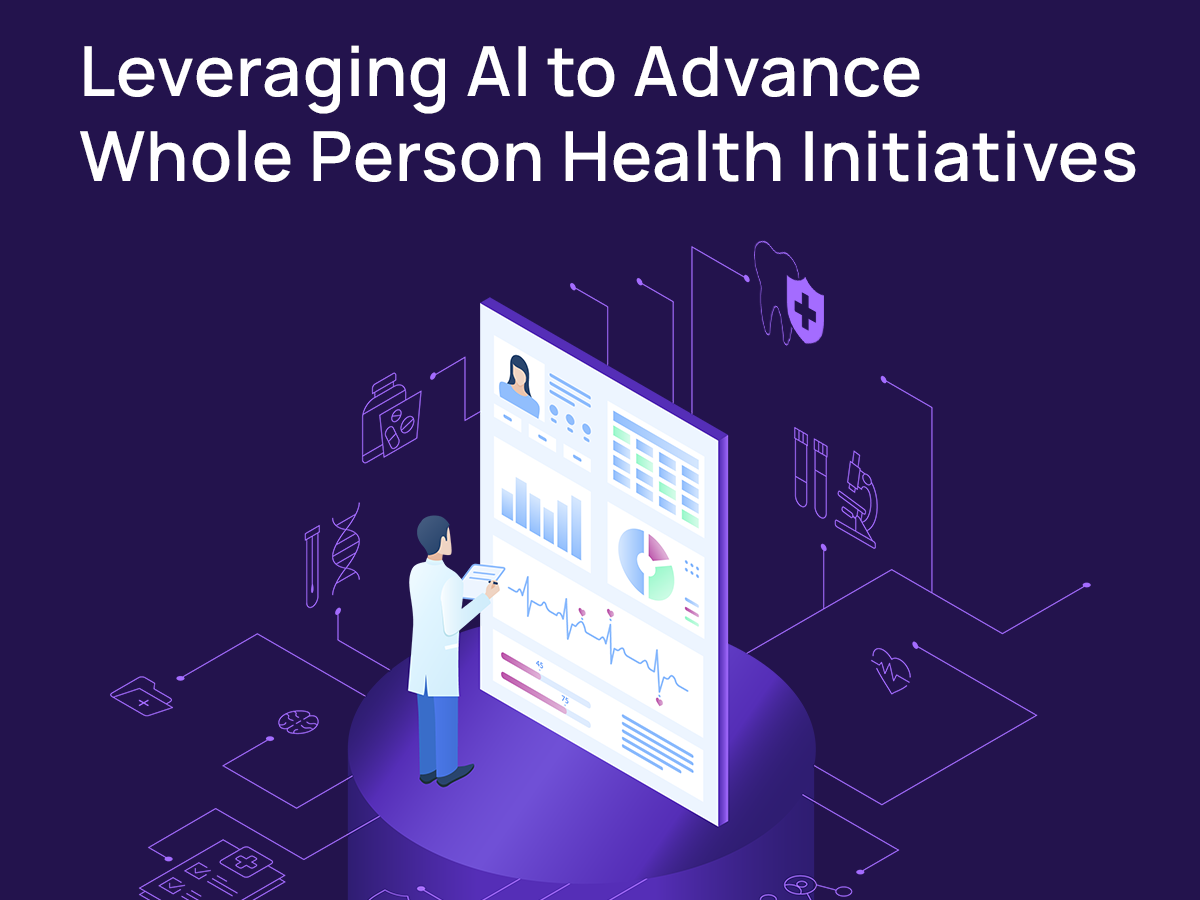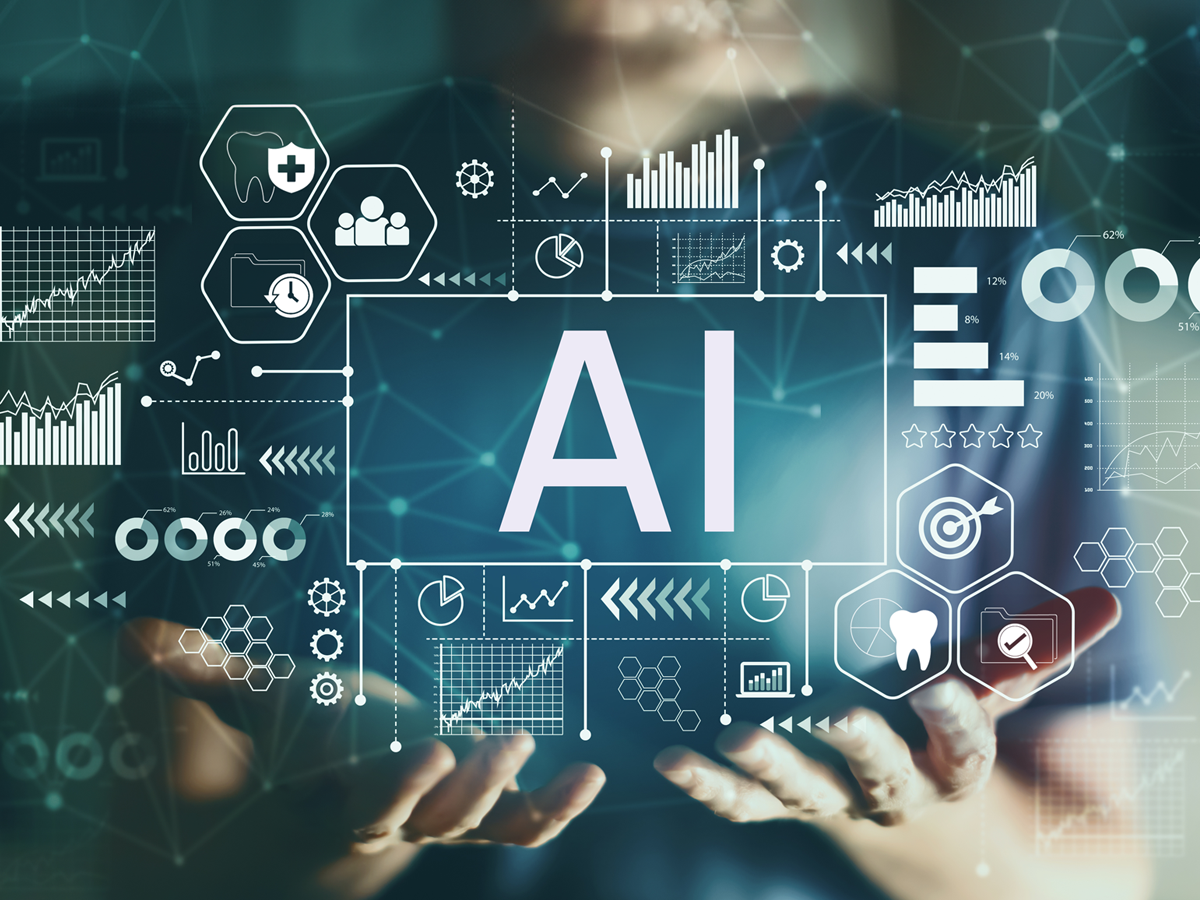Change might be a divisive word on occasion. Yet, it’s appropriate when considering the positive impact of AI (Artificial Intelligence) in dentistry.
We’re not talking the kind of change or impact that disrupts the human element of care. Rather it’s a supportive brand of change that tightens the current and future synergy between emerging technology and clinical applications.
Doing the “deep work”
Data comes at you fast and furious in dentistry. And it multiplies in scope – especially for growing DSOs.
The power of AI technology is its capacity to handle massive amounts of data.
- AI is quick to explain data points
- AI automates diagnostic data discovery (e.g. images, scans, etc)
- AI provides treatment perspective
- AI can help spot potential disease
The machine learning (ML) aspect of AI is pattern-sensitive. The system can learn to perform intelligent tasks without having prior knowledge or being subject to “hand-crafted rules.” [1]
ML can be trusted to identify patterns in a large amount of data. And it’s capable of doing so without human assistance. [2]
And going even deeper…
Deep learning (DL) is a sub-level within ML that recognizes initial patterns and those that build on each other. This AI-driven capability sees pattern combinations or “stacks” that are deeper than what was initially seen. [3]
That’s a two-level perspective of how AI can make sense of all the data coming at you in dentistry. The scope isn’t likely to diminish as data-driven technology evolves.
So, it’s to your advantage to be aware of the practical impact of AI on dentistry in general, within your DSO, and/or at the more granular practice and patient care level.
Six ways to utilize the impact of AI in dentistry
1-Smart-activation
The use of smart-technology is helping shape patient health habits. For example, app-driven (AI supported) smart toothbrushes are equipped to share data with your providers.
- Dentists can observe available data around patient care routines.
- Dentists have opportunity to support their consultations, educational resources, and digital content with actual usage data.
- Dentists can capitalize on app based patient communication discoveries.
Voice-activated communication is another AI-based solution with clinical applications.
- Hands-free note dictation that can be attached to patient EMR (Electronic Medical Records) and diagnostic images.
- Voice-guided research, diagnostic protocols, and treatment communication.
Related research predicts that 25% of employee interactions with apps will be via voice by 2023. That’s an increase from 3% in 2019. [4]
2-Clinical confidence
Patient diagnosis relies on accurate analysis. Visual identification of a patient’s pathology can be supported by AI.
Computer vision AI provides real-time analysis of x-rays to detect key elements of a patient’s condition. This assists with care standardization, diagnostic confidence, and problem-solving relative to the patient’s case acceptance and results.
3-Predictable treatment outcomes
A treatment plan is based on the best available data. AI models have the ability to access countless patient records containing treatment related data.
- Provides analysis of varied treatment scenarios and possibilities.
- Assists with current case success potential, case scope, required resources, costs, etc.
Treatment acceptance can also be compelled with AI assistance. For example, smile design technology uses augmented reality (AR) to reveal real-time treatment outcomes.
- Patients can see the results of their procedure in advance.
- Patients can ask more informed treatment questions leading to acceptance.
4-Streamlined insurance reimbursements
Claims reviews have relied on manual reviews by in-house dental professionals for decades. AI adds another more streamlined perspective to the review process.
- Faster reviews of data, diagnostic images, and treatment documentation.
- Quicker approvals.
- Improved fraud protection.
5-Systemic care validation
AI supports the legitimate connection between a patient’s health records and their current oral and general health condition. Systemic health is a valid point of communication between dentistry and the prevention and treatment of disease.
6-Patient communication ROI
AI enables you to better understand how and why patients interact with your practice(s). It provides insightful analysis into patient communication and how it eventually affects your revenue stream.
- Communication data can reveal timing, service interest, and scheduling details.
- Communication data assists with team training for better patient engagement and an improved patient experience.
- Communication data can be analyzed for more targeted and demographic-centric dental marketing strategies.
The impact of AI on dentistry has the potential to create useful changes. Innovation will emerge where practical applications are needed.
AI and its impact on dentistry is expanding among DSOs who understand the value. The following resources will enlarge your perspective and application of AI in dentistry:
The Reality of AI Support for Dental Practice Workflows and Clinical Accuracy
How AI Impacts Clinical Excellence and Patient Outcomes for DSOs
AI growth in dentistry is the result of technology leadership among the largest DSOs and insurance companies
Overjet is the global leader in dental artificial intelligence, helping both payers and providers improve patient care. Founded by experts from MIT and Harvard School of Dental Medicine.
Overjet has assembled the largest and most seasoned team of technologists and domain experts with deep AI, dental, and insurance experience.
Learn more about Overjet or request a demo.
[4] https://pankeygram.org/ai-powered-technology-in-dental-practice/











